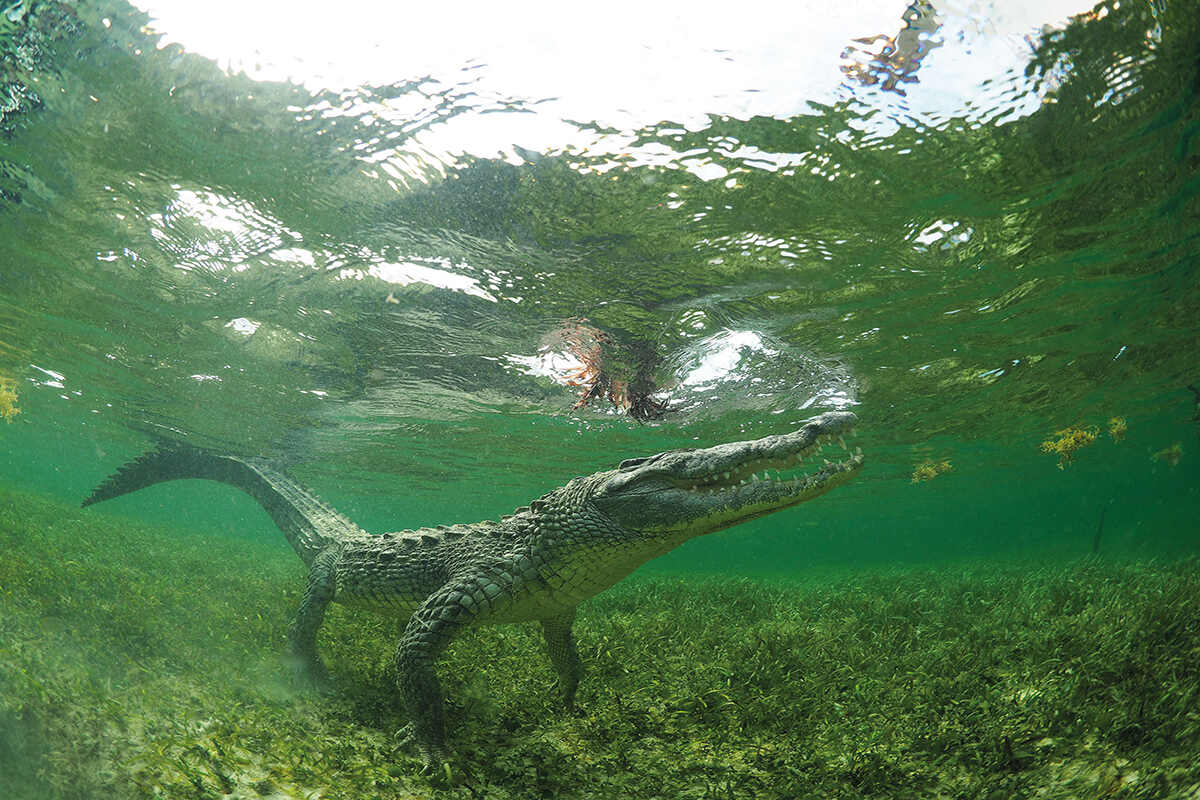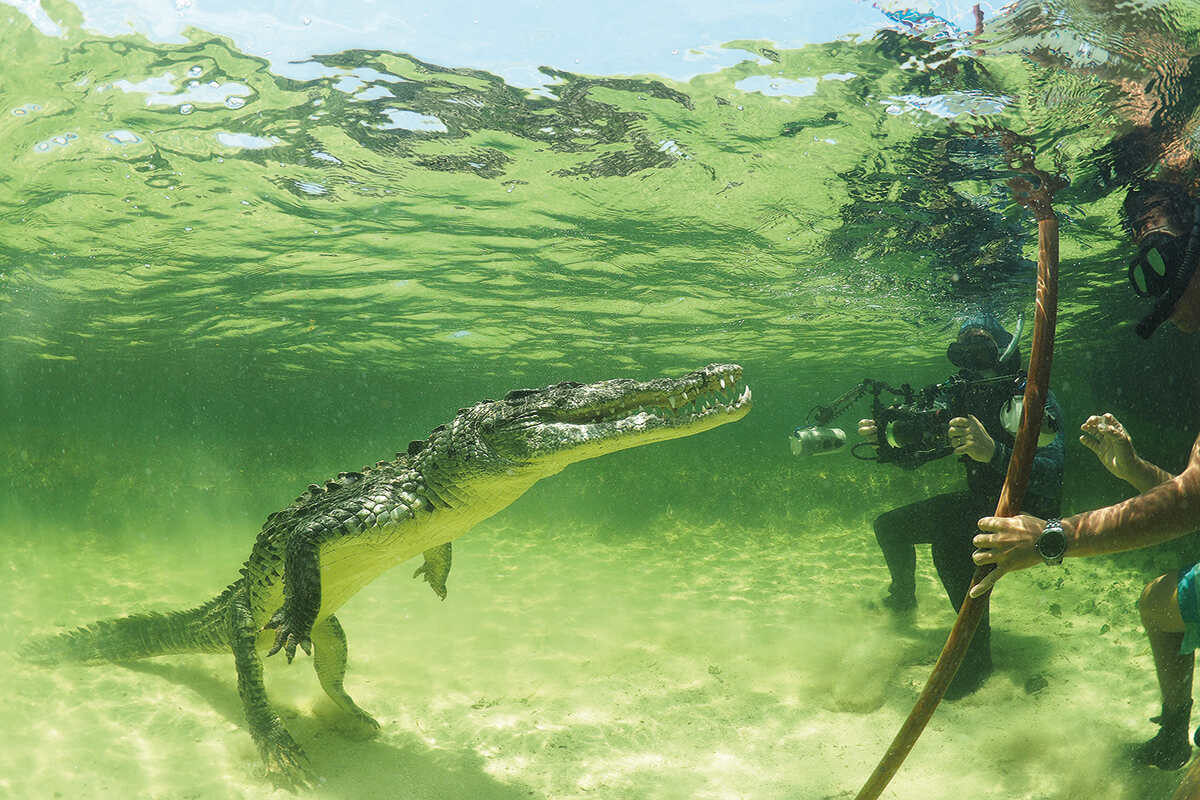
Terrifying. Majestic. Charismatic. Even Endearing… Alex Misiewicz meets the American crocodiles of Banco Chinchorro
Words and images by Alex Misiewicz
Xcalak (Esh-kallack) is a hot, five-hour drive south from the tourist mayhem that is Cancún. It is one of the oldest fishing villages on the Mexican Caribbean coast, with a summer population of about 400. Sleepy and rarely visited, it is the antithesis of the chaos I had just left.
I had just finished a four-day photo tour with a small group in Isla Mujeres, swimming with whale sharks and giant mantas, and was heading south to begin Stage Two of our trip – an encounter with American crocodiles at Banco Chinchorro.
The local reefs around Xcalak offer some superb diving with typical Caribbean underwater vistas of tube sponges, fan corals and abundant reef fishes. An added bonus is the opportunity of bumping into manatees at some dive sites and, at La Poza, schools of giant tarpon patrolling in large numbers. But we were here for one reason only – the crocs!
Banco Chinchorro is a National Biosphere Park and, at 3,333 sq m, is the largest coral atoll in the western hemisphere. It’s also one of the most remote diving destination in the Caribbean and boasts some pristine reefs and lots of shipwrecks. Only five per cent of the atoll is above water, so it is easy to understand why so many ships over the years failed to see disaster approaching on the shallow banks.
The reefs, however, are in wonderful condition. Healthy coral and an abundance of reef fish are testimony to the remoteness of the site.
The trip out to Banco Chinchorro is weather dependent and, at about 35 nautical miles, it can take an hour and a half or, at worst, three in choppier conditions. We had a small head swell of about one metre so it took us around two hours, and in the open boat we all got a good sluicing.

Our temporary hotel (fishing hut on stilts) was an interesting arrangement – no running water, no power (except for the portable generator) and a ‘dry toilet’ – think sawdust! Twelve people sleeping in hammocks or on the floor for two nights in a space the size of a small city flat. It was character building to say the least.
Swimming with crocodiles is, without question, one of the most stimulating activities that you can undertake, but it’s not for the faint-hearted. We were well briefed and instructed on crocodile behaviour and there was always an experienced handler present with us in the water. However, there is nothing that prepares you for the first time a four-metre crocodile slides down off the seagrass bank and creeps toward you with an open mouth. Camera shake? Nah, more like a wetsuit pressure test!

After a few sessions in the water we started to feel slightly more relaxed, but comfortable never came into it. The crocs are both terrifying and majestic, but also charismatic, and, as time wore on proved increasingly endearing. It was hard not to like them with all their prehistoric reptilian defiance.
The three days went far too quickly and before we all knew it, Banco Chinchorro was just a blip on the horizon as we headed back to the mainland. Memories of the remoteness, the accommodation, the mozzies, the camaraderie and reptilian teeth will follow me for the rest of my travels.




